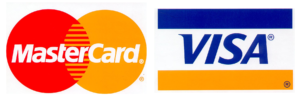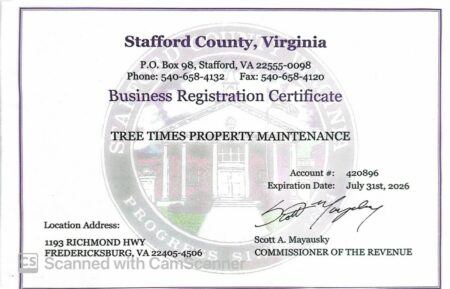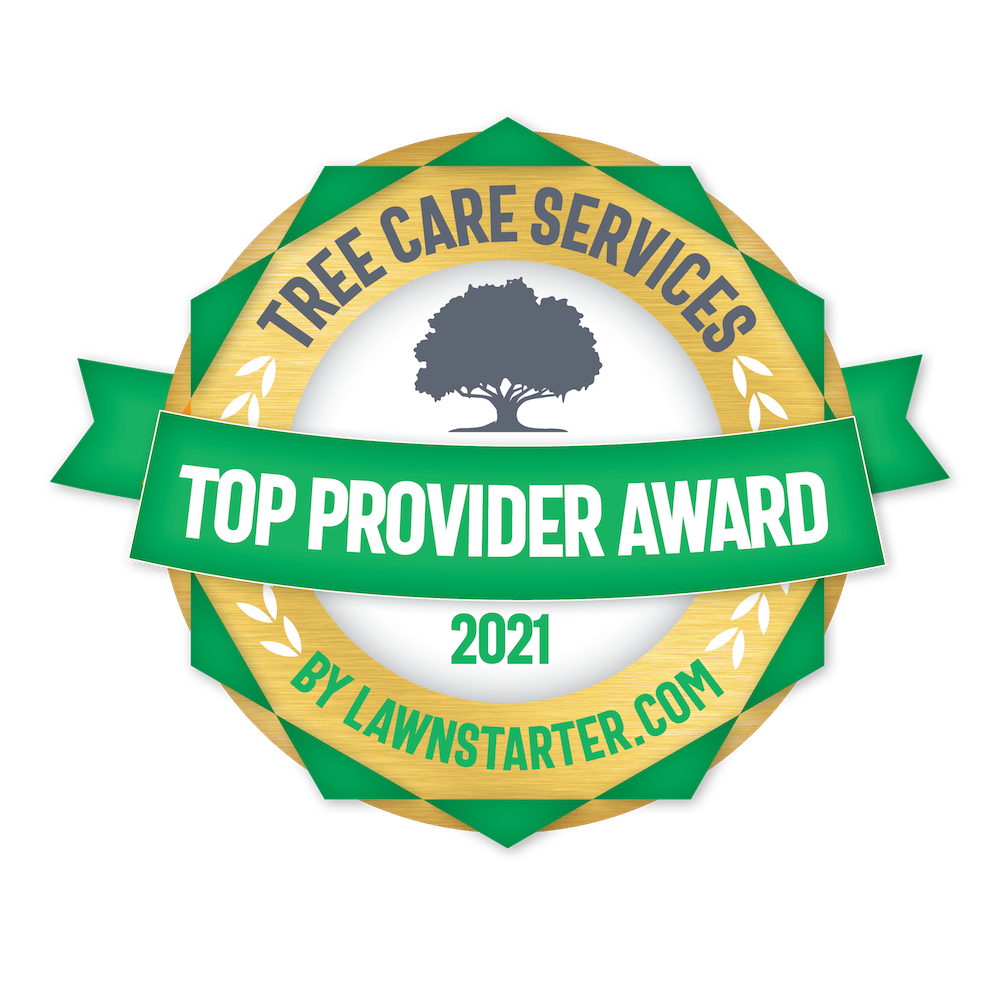One tree service and its methods are just as good as another’s.
That would make it easy and simple, but it just isn’t true. In Virginia, there is no requirement to be met before one can claim to be a professional arborist. It seems that if you can spell it, you can claim to be one. A professional arborist is generally recognized if he or she is certified by the International Society of Arboriculture (ISA). In many ways, the ISA certificate is like a degree in tree care. Also, you should ask about your tree contractor’s knowledge of nationally recognized pruning standards, A-300. You may even request a copy. If company seems unfamiliar familiar with these standards, you probably want to look elsewhere. Bad pruning and over-pruning (such as tree topping) kills more trees than any other tree care mistakes. Improper fertilization or pruning too much or at the wrong time can also make trees need pruning more often and lead to an increase in insects.
Thinking about having trees pruned, fertilized, removed or replaced? Here are some recommendations:
Recommendation #1: List your objectives.
Do you want only dead and diseased limbs removed, or do you also want long-term training of the limb structure? Do you need pruning and limb training to reduce limb interference with a home or an out building? How about cosmetic pruning to open a view? Raising the canopy to increase sunlight below a tree? How exactly do you want the end result to look?
Recommendation #2: Ask questions!
The way to learn about a company is to ask specific questions and listen carefully to the answers.
What training have you had in tree care?
Are you certified by the International Society of Arboriculture (ISA)?
Are the people you send to do the work regularly trained in safety and proper tree care techniques? How?
Do your employees wear identifying uniforms to let me know who should be on my property?
- Does your company allow employees to use tree spikes at any time to climb trees to be trimmed? (These can seriously harm trees by causing infections.)
- Do you require adherence to nationally recognized A-300 pruning standards, and may I have a copy?
- Do you advertise or suggest topping trees? (If the answer is “yes,” run from this company, unless it only tops for temporary safety or under utility lines).
- Does your company suggest leaving the brush by the street for the city to pick up? (The city will not pick up brush left by contractors; this can result in fines and an increased cost of brush disposal. Often when this happens the tree company has already been paid and is nowhere to be found.)
- Do you have general liability and workers’ compensation insurance to cover employees? WILL YOU HAVE YOUR INSURANCE COMPANY SEND ME A COPY?
- Can I get pictures of some of your tree pruning jobs?
- Do you require any payment in advance? (Do not do it. Do not pay anything until the job is finished!)
- Is the contact number for your company connected to a physical address? (This is easy to check by calling 1-411. If no address can be found, there will most likely be no way to find the company if something goes wrong.)
Recommendation #5: Ask for a specific price quotation in writing.
Once you’re satisfied that you’re working with an honest, competent professional, invite him or her to your home and get a quote. A written quotation gives you the assurance of exactly what your job will cost-no surprises. Beware of “job estimates.” They can go up.
Recommendation #6: Know and avoid scam attempts you may encounter.
Here are three common scams.
- A tree contractor asks to be paid when your job is half done because he needs to get a chainsaw fixed. What do you do? Often, fly-by-night companies will get one job in a neighborhood by knocking on doors and giving extremely low prices. Once they get the first job, word of mouth travels, so the company gets more jobs in the neighborhood. The company will halfway do several jobs and ask to be paid early for equipment repairs or some other reason. All the jobs will then be left unfinished and the company will be long gone.
- One of the most common scams is to simply print “insured” on a business card or newspaper and not actually have insurance. Ask every business to provide you with a certificate of insurance from their insurance company and you will be surprised at how many will not have any, or will only have general liability and no more.
- You have heard about businesses getting scammed by a new employee who suffers a severe back injury while picking up a piece of paper the first day of work. The company is forced to give workers’ comp and pay for lost wages, etc. unless it can prove that the injury was preexisting. The same thing can happen to you if you hire an unscrupulous tree contractor. You may have to prove that a ridiculous injury did not occur while he was working on your property. This can be nearly impossible to do, and you may end up paying the medical bills for someone who got injured in on a ski trip.
Numerous other scams cost customers thousands every year. Some are not as blatant as the above, but they can be equally as costly to the health of your trees.








